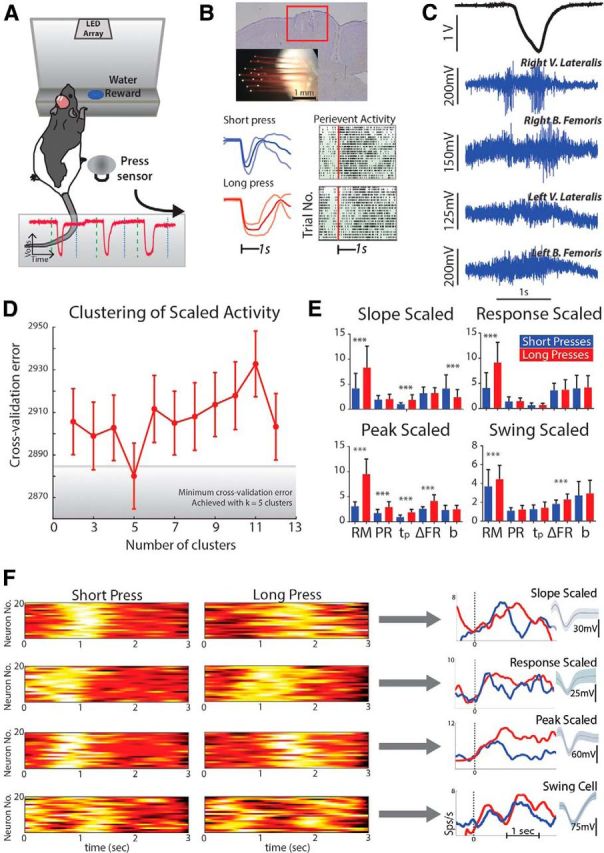Figure 1.

Scaled activity during the behavioral task. A, Rats were initially trained to make short or long duration hindlimb presses onto a press sensor (inset: press sensor signal). B, Microwire arrays were bilaterally implanted in the hindlimb sensorimotor cortex (top) and neural activity was recorded during behavior (bottom). C, Single-trial EMG recordings of hindlimb flexor and extensor activity during the behavioral task. D, Cross-validation analysis to cluster similar scaled responses from all scaled neurons. All response measures from each scaled neuron [response magnitude (RM), peak response (PR), time to peak (tp), change in firing rate (ΔFR), and slope (b)] across short and long trials were input into a k-means clustering analysis to identify commonalities in average responses. The initial number of clusters was tested from 2 to 13 and 9/10ths of the data were used for clustering while the remaining 1/10th was used for testing. This procedure was then repeated 10 times (10-fold cross validation). Of all the initial settings for number of clusters, five clusters (i.e., k = 5) resulted in the minimum cross-validation error (4 commonly scaled patterns, remaining cluster was unscaled). E, Resultant average response measures of all scaled patterns (4) after clustering. F, Combined with average responses, qualitative analysis of trial-average peri-event histograms (20 for each shown in pseudocolor) yielded slope, response, peak, and swing scaled neuron profiles. V., Vastus; B., biceps; k, parameter for number of clusters; Sps/s, spikes per second. ***p < 0.001.
